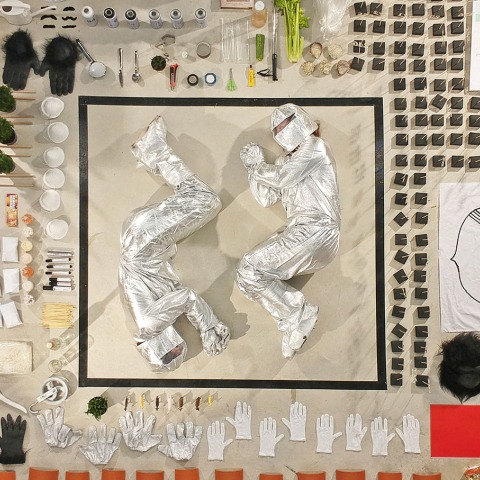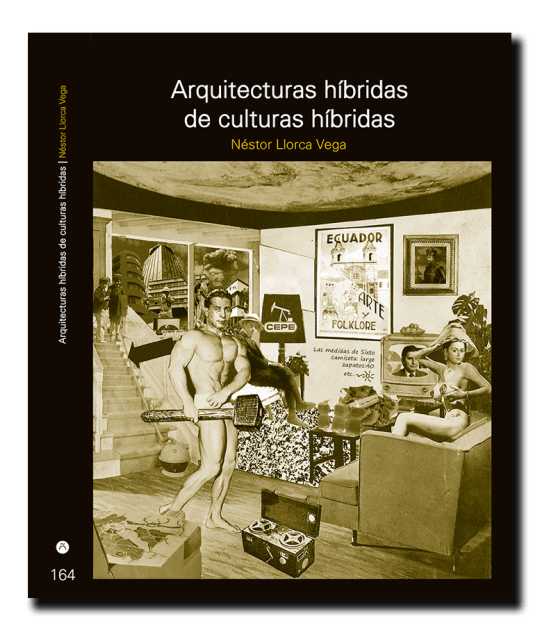The proposed project for the 1st International Architecture Biennial of Euskadi MUGAK, addresses the concept of border transcending political-geographical boundaries, exploring other contexts and scales.
The project "A Fine Line: Scenarios for bordering conditions" has been developed in two stages, in the first one, 16 international architecture teams have been invited to reflect and design a scenario around a frontier idea. In the second phase, a workshop has been developed through which the received material has been rethought and reformatted through a cinematographic laboratory.
In the architectural context, the complexity of a line could be approached from its geometric dimension. We could understand it only as a graphic tool: as the formal mechanism that allows, through a simple exercise of delimitation of substances or spaces, to establish parameters of inclusion and exclusion within any surface; a border or boundary in which elements previously together are divided, differentiated and classified.
But, what happens between these elements once the line is drawn? What happens between these new entities now understood as of "different nature"? What mechanism allows this distinction to be made? Any obsessive scrutiny of a line in search of answers will always lead us to the same conclusion. Among the entities that a line divides only one thing is found.- its thickness.
A Fine Line is a platform for conversation and debate that explores the realities that lie beneath -and on the sides- of line thicknesses, with special attention to its border condition, theme proposed for this first edition of the 1st International Architecture Biennial of Euskadi MUGAK. This project proposes an analysis and problematization of this concept from the architecture and its surroundings, with the will to assume and make visible its complexity and polysemy, transcending its merely political-geographical consideration.
The project was divided into two stages:
In a first phase, 16 international architecture teams were invited to reflect and design a scenario around a frontier idea. The results brought to the table the disparity and polysemy that this concept entails: the different proposals put the focus on issues as diverse as import-export policies, food and transnational production logics, the gradual transitions between genders, utopian visions around the space of the political-territorial frontier, as well as the real conditions that phenomena such as exoduses print on infrastructures, organizations or individual lives and bodies, among other topics.
The second phase of the project expanded the debate platform to different audiences and voices. Through a workshop that had 16 participants, the material received by the 16 invited teams was analyzed, rethought and interrogated through their material appropriation, translating their imaginaries into an audiovisual format that allowed their greater circulation. Thus, A Fine Line becomes, in the physical space and live time of Mugak, a cinematographic laboratory of performative production of the notions of border proposed by each one of the equipment in the previous phase. Each new audiovisual piece was converted, through the rereading of previous materials, into a new modulation. These pieces added to the repertoire of frontier notions that A Fine Line aims to build.
The profiles required to participate were students and professionals in architecture, design, fine arts, audiovisual communication and film. Amateurs of audiovisual culture and interested in the city. Activists and creatives related to urban associations, anthropology or civic and neighborhood culture. Motivated by the script, the narratives, the plastic and filmic languages. Students and professionals of the performing arts.
The exhibition took place in the Convent of Santa Teresa, where it was allowed to reconstruct the speculations and explorations developed both in the research phase and in the workshop, revising original unpublished materials and audiovisual projections produced for the project, allowing the public to access new scenarios of the architectural discipline where the boundaries between the amateur and the professional, the technical and the citizen are diluted, inviting the visitor to be part of the reflections and conversations initiated with the project.
Wich the participation of: C + (Nerea Calvillo & Marina Fernandez), CAMPO, Cooking Sections, Echoing Borders, Matteo Ghidoni-Salottobuono, Husos, Kosmos Architects, M7red, Gili Merin, Pez Estudio, RUJA (Jose Jajaja & Ruohong Wu) , Malkit Shoshan, Takk, Taller de Casquería, URBZ, Venida Devenida.
The project "A Fine Line: Scenarios for bordering conditions" has been developed in two stages, in the first one, 16 international architecture teams have been invited to reflect and design a scenario around a frontier idea. In the second phase, a workshop has been developed through which the received material has been rethought and reformatted through a cinematographic laboratory.
In the architectural context, the complexity of a line could be approached from its geometric dimension. We could understand it only as a graphic tool: as the formal mechanism that allows, through a simple exercise of delimitation of substances or spaces, to establish parameters of inclusion and exclusion within any surface; a border or boundary in which elements previously together are divided, differentiated and classified.
But, what happens between these elements once the line is drawn? What happens between these new entities now understood as of "different nature"? What mechanism allows this distinction to be made? Any obsessive scrutiny of a line in search of answers will always lead us to the same conclusion. Among the entities that a line divides only one thing is found.- its thickness.
A Fine Line is a platform for conversation and debate that explores the realities that lie beneath -and on the sides- of line thicknesses, with special attention to its border condition, theme proposed for this first edition of the 1st International Architecture Biennial of Euskadi MUGAK. This project proposes an analysis and problematization of this concept from the architecture and its surroundings, with the will to assume and make visible its complexity and polysemy, transcending its merely political-geographical consideration.
The project was divided into two stages:
In a first phase, 16 international architecture teams were invited to reflect and design a scenario around a frontier idea. The results brought to the table the disparity and polysemy that this concept entails: the different proposals put the focus on issues as diverse as import-export policies, food and transnational production logics, the gradual transitions between genders, utopian visions around the space of the political-territorial frontier, as well as the real conditions that phenomena such as exoduses print on infrastructures, organizations or individual lives and bodies, among other topics.
The second phase of the project expanded the debate platform to different audiences and voices. Through a workshop that had 16 participants, the material received by the 16 invited teams was analyzed, rethought and interrogated through their material appropriation, translating their imaginaries into an audiovisual format that allowed their greater circulation. Thus, A Fine Line becomes, in the physical space and live time of Mugak, a cinematographic laboratory of performative production of the notions of border proposed by each one of the equipment in the previous phase. Each new audiovisual piece was converted, through the rereading of previous materials, into a new modulation. These pieces added to the repertoire of frontier notions that A Fine Line aims to build.
The profiles required to participate were students and professionals in architecture, design, fine arts, audiovisual communication and film. Amateurs of audiovisual culture and interested in the city. Activists and creatives related to urban associations, anthropology or civic and neighborhood culture. Motivated by the script, the narratives, the plastic and filmic languages. Students and professionals of the performing arts.
The exhibition took place in the Convent of Santa Teresa, where it was allowed to reconstruct the speculations and explorations developed both in the research phase and in the workshop, revising original unpublished materials and audiovisual projections produced for the project, allowing the public to access new scenarios of the architectural discipline where the boundaries between the amateur and the professional, the technical and the citizen are diluted, inviting the visitor to be part of the reflections and conversations initiated with the project.
Wich the participation of: C + (Nerea Calvillo & Marina Fernandez), CAMPO, Cooking Sections, Echoing Borders, Matteo Ghidoni-Salottobuono, Husos, Kosmos Architects, M7red, Gili Merin, Pez Estudio, RUJA (Jose Jajaja & Ruohong Wu) , Malkit Shoshan, Takk, Taller de Casquería, URBZ, Venida Devenida.

























